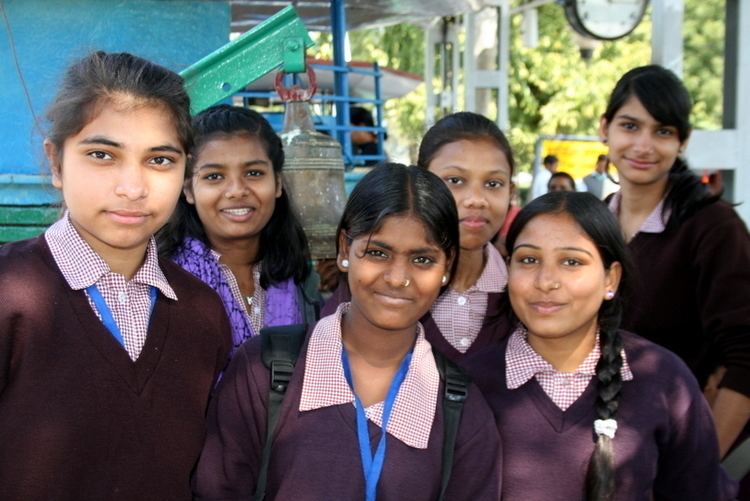Type International Frequency annual | Date 11 October First time 11 October 2012 | |
 | ||
Significance Raise awareness of issues facing girls internationally surrounding education, nutrition, child marriage, legal and medical rights | ||
International Day of the Girl Child is an international observance day declared by the United Nations; it is also called the Day of the Girl and the International Day of the Girl. October 11, 2012, was the first Day of the Girl. The observation supports more opportunity for girls and increases awareness of gender inequality faced by girls worldwide based upon their gender. This inequality includes areas such as right to education/access to education, nutrition, legal rights, medical care, and protection from discrimination, violence against women and unfree child marriage. The celebration of the day also "reflects the successful emergence of girls and young women as a distinct cohort in development policy, programming, campaigning and research."
Contents
Background
International Day of the Girl Child increases awareness of many issues and inequalities faced by girls around the world. Many global development plans do not include or consider girls, and their issues and problems become "invisible." More than 62 million girls around the world have no access to education. Worldwide and collectively, girls ages 5 to 14 spend more than 160 million hours more on household chores than boys of the same age do. Globally, one in four girls are married before age 18. On October 11, 2016, Emma Watson, who is also the United Nations Women's Goodwill Ambassador, urged countries and families worldwide to end child marriage. Many girls around the world are vulnerable to acts of sexual violence and the perpetrators often go unpunished.
The Day of the Girl helps raise awareness not only of the issues that girls face, but also what is likely to happen when those problems are solved. For example, educating girls helps reduce the rate of child marriage, disease and helps strengthen the economy by helping girls have access to higher paying jobs.
History
The International Day of the Girl Child initiative began as a project of Plan International, a non-governmental organization that operates worldwide. The idea for an international day of observance and celebration grew out of Plan International's Because I Am a Girl campaign, which raises awareness of the importance of nurturing girls globally and in developing countries in particular. Plan International representatives in Canada approached the Canadian federal government to seek to the coalition of supporters raised awareness of the initiative internationally. Eventually, Plan International urged the United Nations to become involved.
International Day of the Girl Child was formally proposed as a resolution by Canada in the United Nations General Assembly. Rona Ambrose, Canada's Minister for the Status of Women, sponsored the resolution; a delegation of women and girls made presentations in support of the initiative at the 55th United Nations Commission on the Status of Women. On December 19, 2011, the United Nations General Assembly voted to pass a resolution adopting October 11, 2012 as the inaugural International Day of the Girl Child. The resolution states that the Day of the Girl recognizes
[the] empowerment of and investment in girls, which are critical for economic growth, the achievement of all Millennium Development Goals, including the eradication of poverty and extreme poverty, as well as the meaningful participation of girls in decisions that affect them, are key in breaking the cycle of discrimination and violence and in promoting and protecting the full and effective enjoyment of their human rights, and recognizing also that empowering girls requires their active participation in decision-making processes and the active support and engagement of their parents, legal guardians, families and care providers, as well as boys and men and the wider community [...]
Each year's Day of the Girl has a theme; the first was "ending child marriage", the second, in 2013, was "innovating for girl's education", the third, in 2014, was "Empowering Adolescent Girls: Ending the Cycle of Violence." and the fourth, in 2015 was "The Power of Adolescent Girl: Vision for 2030". The 2016 theme is "Girls' Progress = Goals' Progress: What Counts for Girls."
By 2013, worldwide, there were around 2,043 events for Day of the Girl.
Events worldwide
Various events to promote the Day of the Girl are planned in several countries. Some are sponsored by the United Nations, such as a concert in Mumbai, India. Non-governmental organizations, such as the Girl Guides Australia, are supporting events and activities for International Day of the Girl Child. Local organizations have developed their own events, such as Girls and Football South Africa, who will distribute T-shirts on International Day of the Girl Child to commemorate the 1956 Black Sash march by 20,000 women. An all-day event was held on London's South Bank in 2013, which included theatre and film performances produced by Body Gossip, an organisation that campaigns on body image and mental health issues. For the first Day of the Girl, a virtual event was developed by Sage Girl and iTwixie to bring thousands of individuals and organizations together online.
In 2016, London held a Women of the World (WOW) festival where 250 London school-aged girls were paired with women mentors. Also in 2016, President of the United States, Barack Obama, issued a proclamation supporting an end to gender disparity.
Social media uses the hashtag, #dayofthegirl to track events and news about the day.
